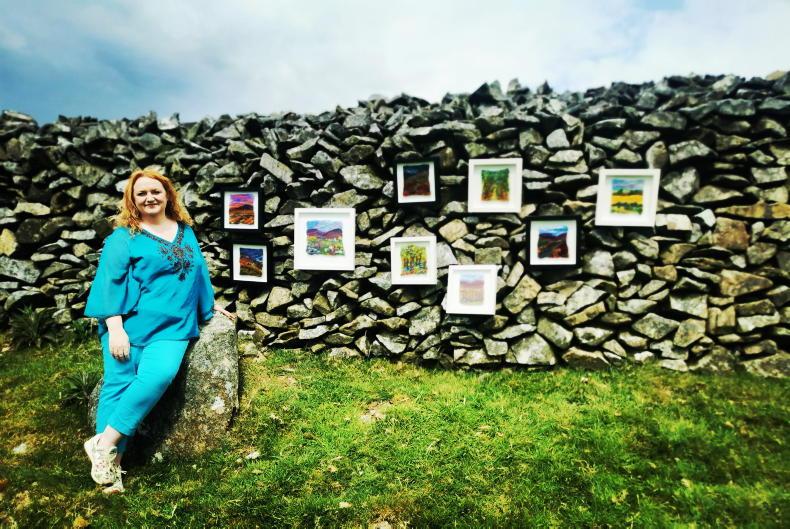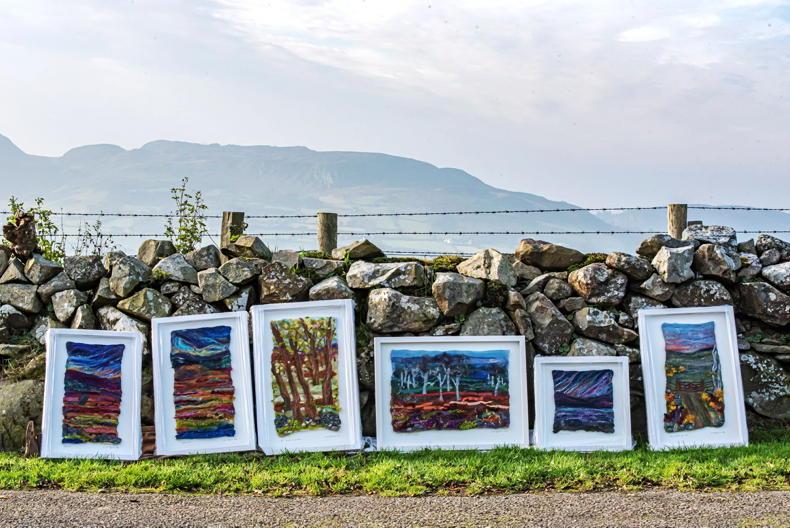I first began felt making 14 years ago. It was always something I loved doing, but I also did lots of other stuff. I was a milliner for a few years, but I always came back to the wool, that’s what I think really cemented it for me. I would still make hats for myself, but not as a job anymore. I could do it, but I didn’t enjoy it. I think that was a case of not being able to follow my own style. Somebody would bring a picture from a magazine; someone else’s design. To me, it didn’t feel true.
I first began felt making 14 years ago. It was always something I loved doing, but I also did lots of other stuff. I was a milliner for a few years, but I always came back to the wool, that’s what I think really cemented it for me. I would still make hats for myself, but not as a job anymore. I could do it, but I didn’t enjoy it. I think that was a case of not being able to follow my own style. Somebody would bring a picture from a magazine; someone else’s design.
To me, it didn’t feel true.
In 2014, I really began to take what I love doing seriously and realised that I could make a living from it. The turning point for me was when my husband broke his back. We have four kids, and he was completely out of work. I realised that I could work full time and keep us afloat, which was unusual for an artist.
I went full time, then, as a working artist in Bridge Street Studio, in Co Dundalk, and we survived, which was brilliant.
Inspiration from home
I’m very much of the place where I come from. That’s why doing what I do really suits me; it links me directly to the landscape; working with wool especially. I just go with my gut and make stuff that I want to make – not what I think will sell – which is a real privilege. It’s always a big compliment when people buy what you have made for you.

Caóilfíonn Murphy O'Hanlon with her work in her native Armagh.
I was brought up with my mum and dad in the valley of Slieve Gullion – we’re the highest farm on Slieve Gullion. It’s called a ring dyke. The main mountain was a volcano, so it formed a ring of smaller mountains. Everywhere you looked, you saw mountains and mountain sheep. Where I live now is my grandfather’s farm. He always kept sheep – a cross between Scottish Blackface and Suffolk. So I was brought up with sheep, and the Irish Farmers Journal sitting in the front room table.
The Ring of Gullion is famous for story and song and legends – Cú Chulainn and all the old town legends – through Oriel
Unfortunately, in 2001 with foot and mouth, we lost our sheep. My grandfather spent years breeding the knowledge into the sheep and all of a sudden that knowledge that he bred into his flock was wiped out in one go; years of farming just disintegrated. It was heart-breaking.
The Ring of Gullion is famous for story and song and legends – Cú Chulainn and all the old town legends – through Oriel. I was brought up on those, and there’s a special oriel dialect that links those counties. I was always very inspired by that.
Luna the sheep
We had a pet lamb three years ago called Luna. She was a triplet, her mother abandoned her and there wasn’t much hope.
We tube fed her, she slept at the AGA and she went to the toilet on a puppy pad and put herself to bed at night. We still have her, this year she just had her first two lambs.
I’m using her shorn fleece now for my art, which is really nice. I generally use Merino wool but I use her fleece on the stone ditches in my work, it’s very rough and textured so I can needle-felt it. I like to say there’s a little bit of Slieve Gullion mountain sheep in all my pieces.
I get Wensleydale from a lady farmer and artist who lives in Rathfriland in Co Down. She’s my most local supplier
There’s nowhere in Ireland to source Merino, my Merino is mostly Australian. I live right on the border, we always would have been border people, which was quite scary with the whole Brexit thing.
However, I get Wensleydale from a lady farmer and artist who lives in Rathfriland in Co Down. She’s my most local supplier, and it’s great because you’re also supporting another artist. I also get some corridale fleece from England, but my most local is from Luna. The heart-breaking bit is, the fleeces here are worth nothing – it nearly costs more for the farmer to have them shorn than the price they get for the wool.
Collections and exhibitions
The last collection I did was La Bealtaine; it was a celebration of spring. Something I thought about last year in the first lockdown was how lucky we were to live where we live – it made me look much closer at much simpler things, like the blossom on the Hawthorn, and really appreciate simple, slow things in life.

Caóilfíonn's textile art.
I think there’s been a big shift back to taking your time and appreciating things. Felt-making itself is a very therapeutic and slow craft. I don’t think I’ll ever have to pay for a therapist as long as I’m making art.
We have an exhibition coming up here in studios in September, it’s called Hide. It’s in conjunction with the street art festival in Louth, which is called Seek. I also have another exhibition coming up with ROGHA. There’s a cairn on the summit of Slieve Gullion, it’s Neolithic – it was a burial chamber, and it floods with light on the solstice. That’s probably the turn I’ll take on the exhibition. We also had a great exhibition of Christmas to celebrate our 25th anniversary. We used the windows of the closed shops in Dundalk as a gallery, and I sold out in that exhibition so I was delighted.
Goats and royalty
We have wild mountain goats on Slieve Gullion. The old Irish Goat Society came with a shepherd from Chile and spent three days trying to track down our goats, then they came to us and my son had found them within an hour. It turns out our goats on Slieve Gullion are an exact DNA match to goats in Mulranny. We think my great-grandfather was one of the goat men from Dromintee. I now use some of the goat’s hair in my work. I got to tell that story to Prince Charles a few weeks ago. I was asked if I would come and speak to a council delegation for rare breeds, but it actually turned out it wasn’t a council delegation. It was Prince Charles. It was one of those bizarre encounters that you don’t ever expect to have.
Future artists
I love working in schools. Last year we did a brilliant project, we had a school transfer from Mulranny primary school and they did a three-day art project on the goats. You go into schools and kids don’t know where wool comes from, they think you buy it in the shop. Kids are so used to everything being at a switch from a button, they’re so rewarded when they make a piece of material.
www.cushlaofgullion.com





SHARING OPTIONS: